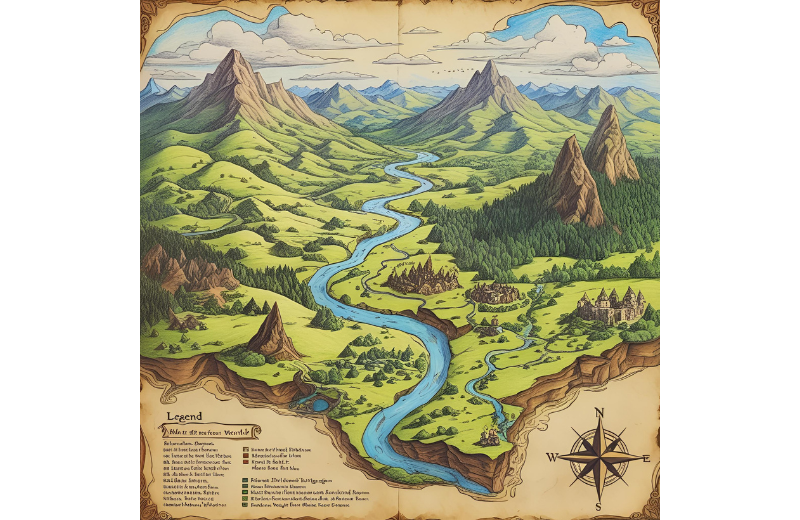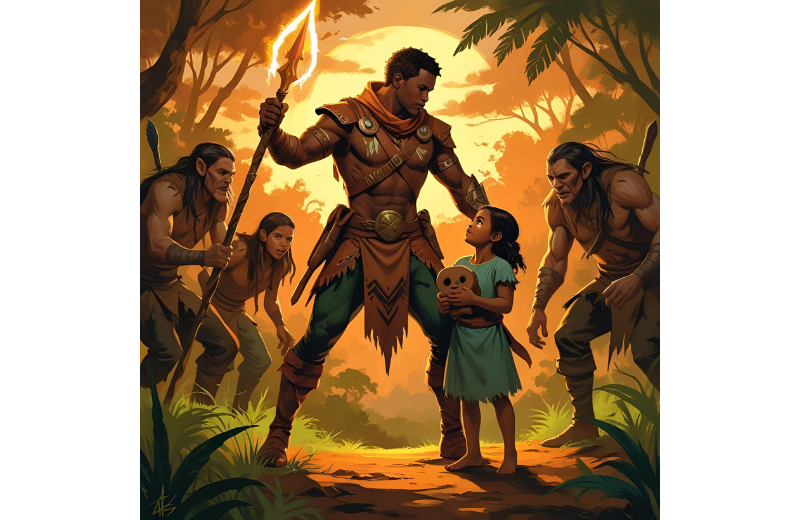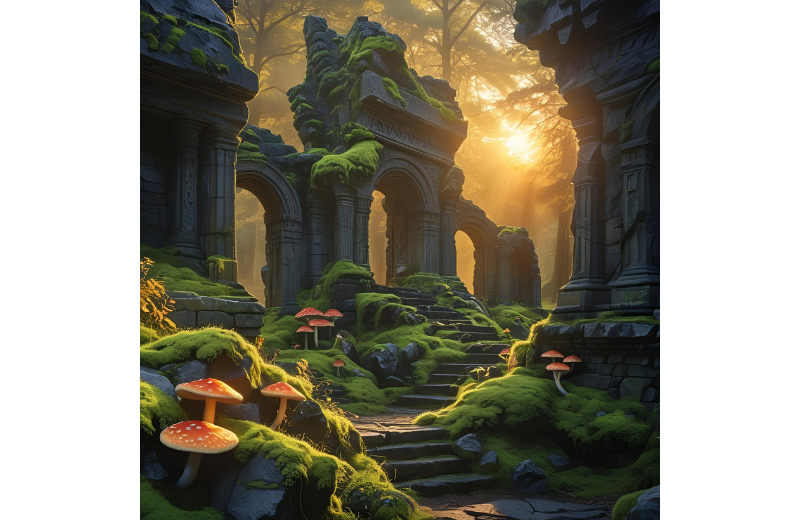Writing fantasy fiction is one of the most rewarding ways to unleash your creativity, allowing you to build captivating worlds, design intriguing characters, and spin stories that can enthral readers for generations.
If you want to learn how to create a fantasy world of your own, or write a fantasy book that captures a reader’s imagination, this is for you.
Jump to:
- What Is Fantasy Fiction?
- How Long Should a Fantasy Story Be?
- How to Begin Your Fantasy Story
- Making Your Story Come Alive
- Creating Memorable Characters
- Creating a Strong Plot for Your Fantasy Story
- Creating Settings in Fantasy Genres
- Making Your Fantasy Book Stand Out
- Tips for Writing a Fantasy Series
- Frequently Asked Questions
- Study Our Novel Writing Diploma for £29
Recommended for you!
Best SellersWhat Is Fantasy Fiction?
Fantasy fiction is a genre where magic, mythical creatures, and otherworldly settings form the backdrop for the story. From classic epics like The Lord of the Rings to modern bestsellers, this genre embraces ideas that can’t occur in the “normal” world. It can be high fantasy (entirely fictional worlds), low fantasy (a mix of reality and magic), or dark fantasy (brooding, gritty settings).
Fantasy fiction allows writers to break free from everyday constraints and ask questions like: What if dragons roamed the skies? What if a kingdom was built upon a giant turtle? What if a character possessed immortality? The beauty of this genre lies in its infinite potential.
How Long Should a Fantasy Story Be?
Fantasy stories range from short, captivating tales to sprawling epics:
- Short stories: 1,000–10,000 words
- Novels: 80,000–120,000 words
How to Begin Your Fantasy Story
The key to creating an epic fantasy story beginning is to ground your reader in a compelling scene from the very first sentence. Here are a few ways to open your story:
- Begin with a character making a choice
- Introduce a mysterious setting
- Pose a threat or challenge
For example, an opening line might be:
“The dragon swooped low over the mist-cloaked mountains, its shadow swallowing the tiny village below.” This approach immediately draws readers in and sparks their curiosity.
Making Your Story Come Alive

A strong setting is vital when creating a fantasy world. This process is called world-building. But how do you build a fantasy world that feels authentic? Here are some tips:
- Map It Out: Draw a map or describe the landscapes.
- Design a History: What shaped your realm? What conflicts have occurred?
- Develop a Culture: What do your characters eat? What festivals do they celebrate?
- Set the Rules for Magic: Will magic be rare? Will it corrupt those who use it?
- Create Believable Characters: Will your characters fit within this world’s culture and limitations?
Remember, world-building doesn’t have to be overwhelming. You can build a fantasy setting gradually as your story unfolds. Readers enjoy discovering the world alongside your characters.
Creating Memorable Characters

Characters are the heart of any story, and this is especially true for fantasy. When you write fantasy fiction, think about character design. Will you have magical characters? Will your hero be an unsuspecting farmer called upon to save the realm? Will your villain be a cunning sorcerer plotting in a dark tower?
Types of fantasy characters:
Each character needs a distinct voice, motivation, and role. What are their fears, strengths, and vulnerabilities? What kind of character arc will they experience throughout the story? These questions will help you create captivating characters that readers can connect with.
Creating a Strong Plot for Your Fantasy Story

A strong plot gives your story direction and keeps readers engaged from the very first page. Here are some tips to help you create a compelling plot for your fantasy story:
- Start with a Clear Goal: Decide what your main character is trying to achieve. This goal will drive the action and give your story its backbone.
Example: A young farmer must find a lost relic to save their kingdom from ruin.
- Add Conflict and Challenges: Every good plot needs obstacles, moments where your character is tested and forced to make tough decisions. These create tension and keep readers turning the pages.
Example: An unsuspecting character inherits a mysterious magical ability and must learn to control it while being hunted by a ruthless enemy.
- Make the Stakes Matter: What will happen if your character fails? Making the stakes personal and significant gives your plot urgency and emotional weight.
Example: Two rival nations must unite to defeat an ancient beast, or their entire world will fall into darkness.
- Pace the Story: Balance moments of action and quiet reflection so the reader can catch their breath while still feeling invested in the outcome.
Example: After a thrilling dragon attack, your character finds refuge in an abandoned forest temple, giving them a chance to rest, heal, and rethink their quest.
- Allow Characters to Grow: A compelling plot is shaped by how your characters evolve. Let their choices and struggles lead to changes that drive the story towards a satisfying ending.
Example: A timid healer reluctantly joins a band of rebels, and by the end of the story, she has become their leader, rallying them to victory.
With these elements in place, you can build a plot that captures your readers’ imagination and stays with them long after they’ve finished the book.
Creating Settings in Fantasy Genres

A strong setting is one of the most memorable elements of any fantasy story. It’s more than a backdrop; it shapes your characters, guides your plot, and draws readers into a world they can imagine themselves exploring. Whatever style you choose, making your setting vivid and believable is key.
High Fantasy
High fantasy takes place in a completely made‑up world, often with its own maps, history, and culture. Think sprawling kingdoms, ancient ruins, magical creatures, and quests that define the fate of nations. This approach gives you total creative freedom, allowing you to build a realm that feels rich and captivating from the very first page.
Low Fantasy
Low fantasy blends everyday reality with elements of the magical or supernatural. The setting is usually closer to our own world, such as a quiet village, a bustling city, or a secluded forest, but one where strange creatures, magical forces, or mysterious events can occur. The mix of the familiar and the extraordinary can make the magic feel even more captivating.
Dark Fantasy
Dark fantasy explores worlds shaped by doom, decay, and despair. Its settings are often harsh and forbidding, such as mist‑cloaked ruins, cursed forests, or corrupted kingdoms. The tone tends to be darker, focusing on themes like betrayal, survival, and the fine line between heroism and villainy. This style is ideal for writers who want to create an intense, atmospheric backdrop for their story.
Making Your Fantasy Book Stand Out
Fantasy literature is a saturated market, so it’s natural to wonder how to make yours stand out. Here are a few ways to do just that:
- Focus on character depth.
- Avoid overused clichés (such as “the chosen one”), or give them a fresh twist.
- Build a unique magic system or setting.
- Choose a strong theme that resonates with readers, like belonging or redemption.
A strong premise combined with memorable characters can captivate readers and leave a lasting impression.
Tips for Writing a Fantasy Series
If you’re considering a longer project, like a series, it’s all about planning ahead and laying a strong foundation from the very beginning:
- Outline the overall arc across multiple books
- Maintain character continuity and growth
- Keep track of world-building details
- End each book with a satisfying climax that leads into the next
Recommended for you!
Best SellersFrequently Asked Questions
Should I outline my fantasy novel before writing it?
Outlining isn’t required, but it can be a huge help, especially when creating a complex world or series. Even a simple chapter-by-chapter outline can give you a roadmap, making it easier to stay on track and spot any plot holes before you’ve invested too much time in writing.
How do I come up with unique names for my characters and places?
Try mixing different languages, inventing new words, or blending old words together. Consider the culture of your world. For example, harsh-sounding names for a warrior tribe, or soft, lilting names for an elegant kingdom. The goal is to create names that feel authentic within your setting.
Should my fantasy story have a map?
A map can be a great addition, especially if your story involves a lot of travel or features a sprawling realm. It’s a helpful reference for readers, making it easier for them to picture the setting and understand the character’s journey.
What point of view is best for a fantasy novel?
First-person point of view can create an intimate, character-driven experience, while third-person can give a wider view of your world and cast. Choose the one that best suits the story you want to tell.
How do I know when my fantasy book is finished?
A book is finished when it feels like all of the character arcs have been resolved and the central conflict has been addressed. After your first draft, give yourself some time away from the manuscript, then review it with fresh eyes. Beta readers can also help you spot areas that might need more work.
Study Our Novel Writing Diploma for £29
If you’re ready to take the next step and learn how to write fantasy fiction from the ground up, the Novel Writing Diploma Course at the Centre of Excellence is the perfect next step. The course is designed for writers of all levels and covers every stage of writing a novel, from initial idea to final polish. For a limited time, you can enrol for a discounted price of £29!













